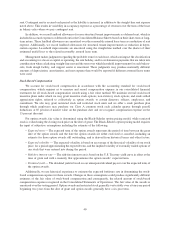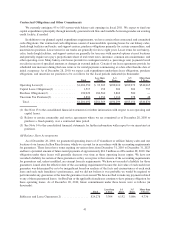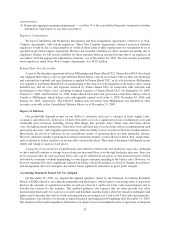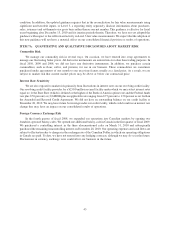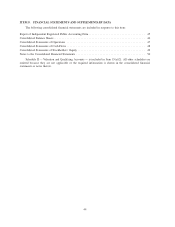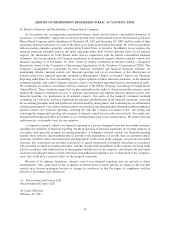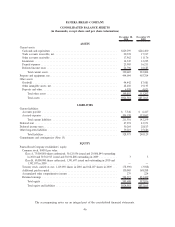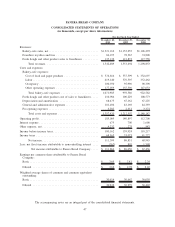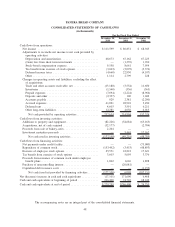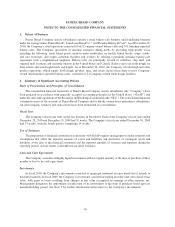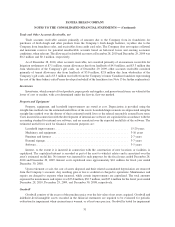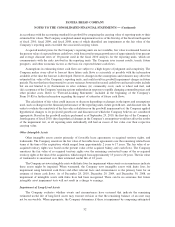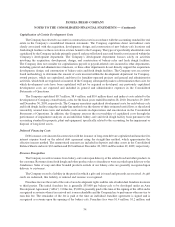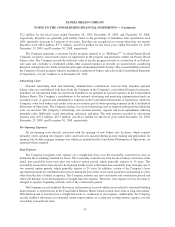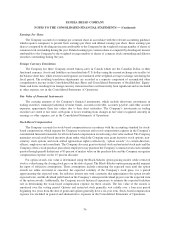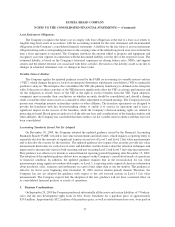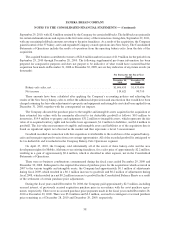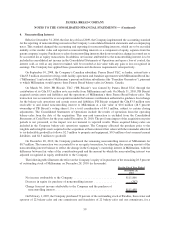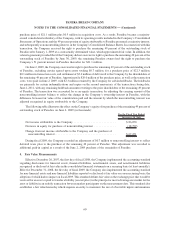Panera Bread 2010 Annual Report Download - page 57
Download and view the complete annual report
Please find page 57 of the 2010 Panera Bread annual report below. You can navigate through the pages in the report by either clicking on the pages listed below, or by using the keyword search tool below to find specific information within the annual report.PANERA BREAD COMPANY
NOTES TO THE CONSOLIDATED FINANCIAL STATEMENTS
1. Nature of Business
Panera Bread Company and its subsidiaries operate a retail bakery-cafe business and franchising business
under the concept names Panera Bread», Saint Louis Bread Co.», and Paradise Bakery & Café». As of December 28,
2010, the Company’s retail operations consisted of 662 Company-owned bakery-cafes and 791 franchise-operated
bakery-cafes. The Company specializes in meeting consumer dining needs by providing high quality food,
including the following: fresh baked goods, made-to-order sandwiches on freshly baked breads, soups, salads,
and cafe beverages, and targets suburban dwellers and workers by offering a premium specialty bakery-cafe
experience with a neighborhood emphasis. Bakery-cafes are principally located in suburban, strip mall, and
regional mall locations and currently operate in the United States and Canada. Bakery-cafes use fresh dough for
their artisan and sourdough breads and bagels. As of December 28, 2010, the Company’s fresh dough and other
product operations, which supply fresh dough, produce, tuna, and cream cheese items daily to most Company-
owned and franchise-operated bakery-cafes, consisted of 22 Company-owned fresh dough facilities.
2. Summary of Significant Accounting Policies
Basis of Presentation and Principles of Consolidation
The consolidated financial statements of Panera Bread Company and its subsidiaries (the “Company”) have
been prepared in accordance with generally accepted accounting principles in the United States (“GAAP”) and
under the rules and regulations of the Securities and Exchange Commission (the “SEC”). The consolidated financial
statements consist of the accounts of Panera Bread Company and its wholly owned direct and indirect subsidiaries.
All intercompany balances and transactions have been eliminated in consolidation.
Fiscal Year
The Company’s fiscal year ends on the last Tuesday in December. Each of the Company’s fiscal years ended
December 28, 2010 and December 29, 2009 had 52 weeks. The Company’s fiscal year ended December 30, 2008
had 53 weeks, with the fourth quarter comprising 14 weeks.
Use of Estimates
The preparation of financial statements in conformity with GAAP requires management to make estimates and
assumptions that affect the reported amounts of assets and liabilities and disclosure of contingent assets and
liabilities at the date of the financial statements and the reported amounts of revenues and expenses during the
reporting period. Actual results could differ from those estimates.
Cash and Cash Equivalents
The Company considers all highly liquid investments with an original maturity at the time of purchase of three
months or less to be cash equivalents.
Investments
In fiscal 2010, the Company’s investments consisted of municipal industrial revenue bonds that it intends to
hold until maturity. In fiscal 2009, the Company’s investments consisted of trading securities that were stated at fair
value, with gains or losses resulting from changes in fair value recognized in earnings as other expense, net.
Management designates the appropriate classification of its investments at the time of purchase based upon its
intended holding period. See Note 5 for further information with respect to the Company’s investments.
50


